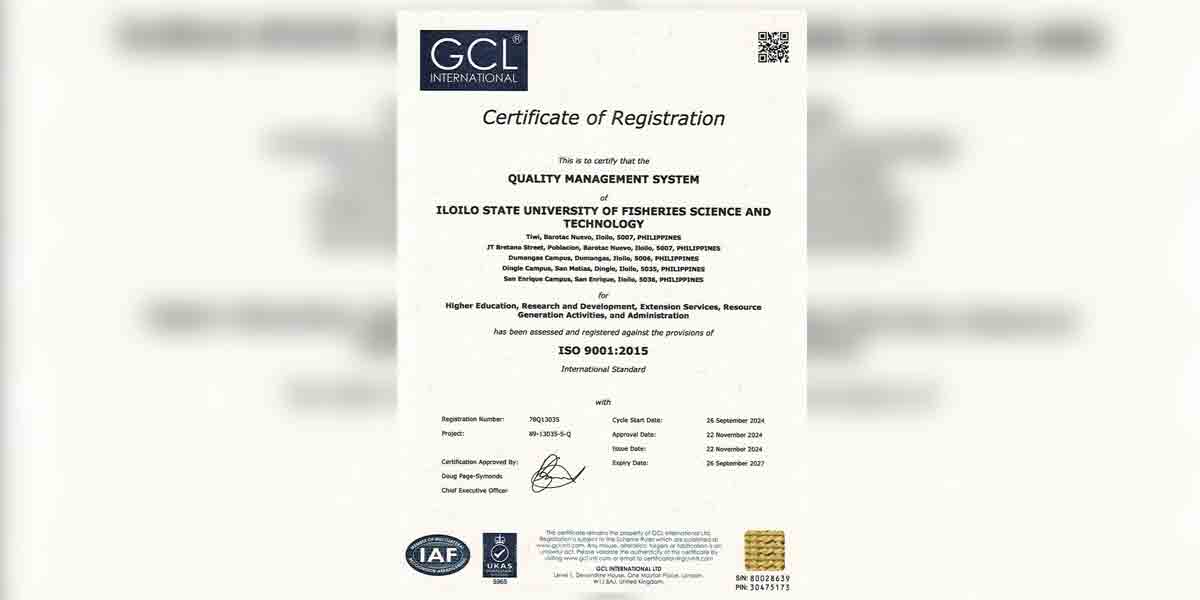
The Social Security System (SSS) on Monday said that the scheduled increase in its contribution rate and minimum and maximum monthly salary credits (MSCs) is to ensure the continuous delivery of social security protection to its members and their beneficiaries.
SSS President and CEO Aurora C. Ignacio said that the SSS has been listening to the clamor of various labor groups and members to defer the said mandated increases; however, the move is designed to protect the fund life of the SSS.
“We understand the plight of our covered employers and members, but, at the same time, it is our duty to secure the long-term viability of the SSS fund entrusted to us for the continuous delivery of SSS benefits to our current and future members, as well as their beneficiaries,” Ignacio said.
“Moreover, these scheduled reforms are pursuant to Republic Act No. 11199 or the Social Security Act of 2018. Thus, we are bound by law to implement it,” she added.
This January 2021, the SSS contribution rate was increased to 13% from the previous 12%. On the other hand, the minimum monthly salary credit (MSC) has been raised to P3,000 from P2,000 (except for Kasambahay and OFW members whose minimum MSC will remain at P1,000 and P8,000, respectively), while the maximum MSC is set at P25,000 from P20,000.
For employed members, land-based OFW members in countries with Bilateral Labor Agreements (BLAs) with the Philippines, and sea-based OFW members, the additional 1% will be divided between them and their employers, bringing the contribution rate breakdown to 8.5% for employers and 4.5% for them.
To illustrate, a member paying under the P10,000 MSC will now pay a monthly contribution of P1,300, which is P100 higher than the P1,200 in 2020.
Suppose the member is employed as a land-based OFW in a country with a BLA with the Philippines or a sea-based OFW. In that case, the P100 additional contribution will be divided as P50 from their employers for a total employer share of P850 and P50 from them for a total member share of P450.
While the MSC to be considered for the computation of benefits under the regular social security program is capped at P20,000, contributions pertaining to the MSC in excess of P20,000 will go to the Workers’ Investment and Savings Program (WISP), a provident fund that will yield additional pension income for members contributing under it.
For example, a member will be paying under the P25,000 MSC. Based on the 13% contribution rate, his/her monthly contribution will be P3,250, of which P2,600 will go to the regular social security fund, while the remaining P650 will go to the WISP.
The SSS emphasized that the said reforms will allow members to save more for their retirement.
The SSS remains the cheapest pension and most accessible pension scheme in the country that offers seven kinds of benefit programs and various loan privileges.
Ignacio said that any delay in implementing the said reforms could endanger the fund life of the SSS and its ability to provide its members and their beneficiaries with benefits and loan privileges, especially in this time of the pandemic.
From January to October 2020, the SSS disbursed a total of P159.47-billion in social security and employees’ compensation benefits to 3.56 million members and beneficiaries.
SSS member loan releases from January to November 2020 totaled P58.03-billion for 3.20 million members, while pension loan releases for the said period reached P3.17-billion combined for 69,813 retiree-pensioners.
On the other hand, SSS contribution collections from January to October 2020 totaled only P169.73-billion, or a decrease of 5.4% from the P179.34 billion collected in the same period last year.
However, SSS’ investments were well-managed and have allowed the pension fund to respond to members’ needs despite the drop in collections during the pandemic.
For further information on the SSS’ new contribution schedule, view its corresponding circulars at https://bit.ly/3pwIJyL, https://bit.ly/33RXdRn, and https://bit.ly/3rA8Ypw.



















